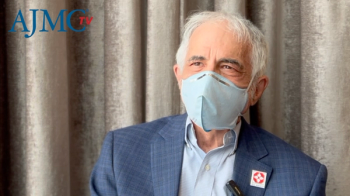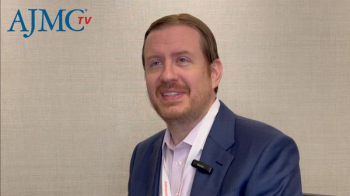
Early Recognition Key to Management of Immunotherapy Toxicities
As much as immuno-oncology has been a leap forward, the ability to address immune-related adverse events is critical to making these therapies available in settings beyond academic centers; thus, the National Comprehensive Cancer Network offers clinical guidelines for management of toxicities.
A dozen years after FDA approval of ipilimumab, developments in the management of immune-related adverse events unfold alongside those of the drugs themselves. As much as immuno-oncology (IO) has been a leap forward, the ability to address these events is critical to making this therapy available in settings beyond academic centers; thus, the National Comprehensive Cancer Network (NCCN) offers clinical guidelines for management of toxicities.
Presenting updates on these guidelines in a March 31, 2023, session at the NCCN Annual Conference were:
- Marianne Davies, DNP, MSN, ACNP-BC, AOCNP, FAAN Yale Cancer Center/Smilow Cancer Hospital;
- Jordan McPherson, PharmD, MS, BCOP, Huntsman Cancer Institute, University of Utah; and
- John A. Thompson, MD, Fred Hutchinson Cancer Center.
Davies began with an overview of the phases of the immune cycle, from tumor degradation to shedding antigens, where they are picked up by
dendritic cells and brought to the lymphatic system—during the priming and activation phase. From here, the regulatory T cells reach the tumor microenvironment and can attack the cancer cells, leading to the release of more antigens, unless the tumor adapts and sets up blockades to stop this process. CTLA-4, for example, can put the brakes on a T cell; thus, the development of ipilimumab blocks that that binding and keeps the T cell activated, Davies said. The PD-1 and PD-L1 inhibitors have emerged in similar fashion.
“As we know, we are actually expanding the number of inhibitors that we have available in our arsenal,” she said, highlighting a list of therapies that abound to treat both solid tumors and hematological malignancies. “I think across the course of any of our careers, we’re all going to be exposed to an immune checkpoint inhibitor therapy.”
Davies noted that checkpoint inhibitors are used in multiple combinations with other drugs and that their use of has moved from the metastatic
relapsed setting to the first-line setting. “Now, we see the approval in the adjuvant and neoadjuvant setting for at least several diseases,” she said.
“I’m sure you can all [see] these potential toxicities from where you’re saying, ‘This is quite a large array of immune-related adverse events.’ In other words, inflammation of any body system. We know the immune checkpoint inhibitors do not just target the tumor cell, but can target healthy normal tissue as well, leading to a potential inflammatory kind of signal.”
The fallout? Toxicities can include fatigue, pruritus, rash, nausea, and vomiting. As Davies explained, this tends to happen in less than 20% of patients, and there’s a variety of responses depending on the agent. “But in essence, every body system can be affected, and thus must be assessed with each visit,” she said. And the timing of these reactions can be unclear. Reactions can occur after several doses or even after therapy is complete, so monitoring must continue.
Pulmonary toxicity. Davies focused on a case involving pulmonary toxicity in a 63-year-old male patient with non–small cell lung cancer. Previously, the patient had bullous emphysema, hepatitis C virus (HCV) treated with ledipasvir/sofosbuvir (Harvoni), Helicobacter pylori, and vocal cord paralysis from intubation—which was for the COVID-19 infection that led to his cancer diagnosis. After concurrent treatment with carboplatin, paclitaxel, and radiation per NCCN guidelines, he was now being treated with durvalumab. Now on the third cycle of durvalumab, he described a worsening dry cough, dyspnea, right calf swelling when walking short distances, and heart palpitations. Although previously able to work, the patient was now unable to work as a medical assistant.
Davies asked the audience to think about what is happening with this patient: Is cancer causing pulmonary symptoms? Thompson took note of the vocal cord dysfunction, and McPherson noted that COVID-19 was likely complicating matters in a patient already at high risk for pneumonitis.
Davies agreed. “As you can see, COVID-19 certainly added to our challenges, particularly for our radiologists,” she said. “Trying to help differentiate what exactly is causing a patient's symptoms—and pneumonitis in the differential here is particularly challenging with patients that have pulmonary involvement [in] their malignancy.”
Assessing a patient’s oxygenation status at rest is an early step, because a change in oxygen requirements is an early sign that pulmonary complications are emerging, she said. Ruling out other causes—such as infectious disease, pulmonary embolism, or disease progression—is next. Immune-mediated pneumonitis occurred in 3% to 7% of early trials, Davies said, and median onset is 60 to 90 days from the start of immune checkpoint inhibitor (ICI) therapy. Mortality rates are high, at 20% to 30%.
“Patients typically present with that dry cough, shortness of breath, chest pain, increased oxygen requirements,” she said. The patient in this case had an oxygen saturation of 94%, when it had been 97%. With ambulation, it dropped to 87% but improved with oxygen. Testing was negative for deep vein thrombosis, and a CT chest scan showed “new consolidation throughout the left lung with worsening ground glass opacities,” which were of concern for pneumonitis and may have been related to radiation therapy.
Given the signs of pneumonitis, clinicians used NCCN guidelines to guide therapeutic decisions, Davies said. Physicians held immunotherapy and reassessed after 1 to 2 weeks while monitoring pulse oximetry; chest imaging can be used, but “in most cases, we would do that and repeat in 3 to 4 weeks for moderate toxicity…where there’s more of the lung involved.” Antibiotics can be considered.
For refractory patients, corticosteroids can be used; if there is no response, for severe toxicities checkpoint inhibitors are stopped for good, and inpatient care is considered. “If the patient is not responding to the initial dose of steroids, then we escalate the methylprednisolone, and if refractory initiate a secondary immune suppressant such as infliximab.”
Davies continued with a description of the patient’s long monitoring period as well as considerations for use of infliximab. She emphasized that once clinicians start methylprednisolone at 1 to 2 mg/kg per day, “if they do not have a response within 48 hours, we do want to consider starting that additional immunosuppressive agent. If you think a patient has high risk factors, you want to probably start to precertify them for infliximab,” since the process with an insurer can take 36 to 48 hours.
Evaluating in advance for possible risk factors and being ready to act is important, Davies emphasized. This patient had been treated for HCV, and testing for tuberculosis up front is also recommended, as it can be reactivated. Knowing where your patient has traveled matters, too. “You shouldn’t delay the initiation of the immunosuppressive agent,” while waiting on test results.
Myocarditis. McPherson then presented a very recent case of myocarditis involving a 74-year-old male with stage IIIA resected melanoma, who had been treated with adjuvant pembrolizumab 2 weeks prior. The patient’s
medical history included hypertension, osteoarthritis, a stroke, and stage III melanoma resection 8 years prior as well as a resection a year ago and a local excision 6 weeks prior to the incident present during the NCCN meeting.
The patient presented at an urgent care center with cold symptoms the week prior to the incident. Two days prior, he had myalgias in the shoulder, back, and thighs and said his muscles felt “overworked” despite a sedentary lifestyle. An exam revealed leg swelling, back pain, dizziness, and influenza A virus; his cardiovascular rhythm was irregular, with bilateral lower extremity pitting edema. The patient had been given acetaminophen. McPherson said the patient’s provider noted the recent start of immunotherapy but that “it would be rare to see toxicity this soon after initiating therapy.”
McPherson asked Thompson to weigh in on that statement. “Is this accurate?”
Thompson called the provider’s comment “interesting” and added, “It does illustrate that there are multiple possibilities…for what's going on. It could be a viral process…This is not unusual for a flu or other viral process. However, after we start therapy, the checkpoint inhibitor, I think that one of the take-home messages at today's session is that we have to be very concerned that getting new development with these symptoms may represent the beginnings of a have a potentially serious immune-related adverse event directly related to the immunotherapy. And I think as this case unfolds, you'll see that that's what going on.”
McPherson agreed, and proceeded to present this case of ICI-induced myocarditis. The median onset is 30 days from the start of therapy, so this patient’s symptoms—weakness, muscle pain, dyspnea, fatigue—appeared early. “The incidence, obviously, is very rare,” he said. “But it is something that we should discount because of the rarity? Absolutely not.”
The mortality rate of this immune-related adverse event is even higher than the pneumonitis case—from 25% to 50%. Patients with these symptoms should undergo extensive cardiologic evaluation, including electrocardiogram (EKG), echocardiogram, and a brain natriuretic peptide (BNP) test.
“If a patient is suspected to have myocarditis, due to the mortality of this condition, it is recommended that we pulse them with the novel prednisone dosing—that is, the highest that we recommend in the guidelines, with 1000 mg IV daily for 3 to 5 days, then transition them if they respond to lower doses,” he said. If there’s no improvement after 2 days, patients should get a secondary immunosuppressant.
McPherson pointed to an algorithm for treatment and noted that the EKG should be compared with one taken at baseline.
This patient showed initial improvement with steroids but then unfortunately started worsening again. McPherson asked Davies for input. She noted that the patient didn’t quality for an available clinical trial and had an ejection fraction too low for infliximab, which might be an option. McPherson agreed, detailing data from an article on the topic that had appeared in the Journal of Clinical Oncology.
“Unfortunately, this is not a good news story,” he said. “At the end of this particular case, the myasthenia gravis workup was not initiated until several days into the case. And even the antibodies were negative. But the patients started to decline, having eyelid dysfunction [and] starting to have respiratory dysfunction.”
McPherson said other secondary agents were used in an attempt to reverse the patient’s rapid decline, to no avail. This led to hypotension, respiratory failure, and ultimately death on day 15—after the patient first showed up with symptoms that looked like a cold.
“This is a cautionary tale for each one of us. We are not doing a great job with these cases; we need to identify them earlier. It's going to be a challenge for us to do that. But I think the beginning, the first step is to be aware of the fact that it's a risk,” McPherson said. “This will lead to early identification, earlier treatment, earlier intervention and hopefully, data on what works and what is effective in the secondary setting past steroids for this this life threatening condition.”
Oral toxicities. Thompson said this area is increasingly recognized in the NCCN guidelines, and Thompson’s tale of a case that unfolded as the
COVID-19 pandemic hit Seattle showed how oral toxicities can linger well after immunotherapy is withdrawn.
The case involved a patient with vaginal and mucosal melanoma who had been treated in 2008 with a radical lobectomy and then had a recurrence at the original site after 11 years. The lesion was re-excised; genetic testing was negative for actionable mutations, and PET/CT scans showed no evidence of distant metastasis. After a tumor board discussion, “We deemed her at high risk of recurrence,” Thompson said, and “she took the recommendation to do adjuvant immunotherapy with pembrolizumab.”
The patient’s first dose was 200 mg, anticipating a year of treatment, but that turned out to be the only dose she could tolerate. She had nausea, diarrhea, mild plasmcytic colitis, and diffuse esophagitis. She tested negative for herpes simplex virus and other infections and was started on prednisone 1 mg/kg/day with planned slow taper. She continued to experience severe lip and mucosal mucositis, as well as gum and tongue mucositis.
“We were fortunate in Seattle to have a strong oral medicine consult team, because of our transplant program largely, but we availed ourselves of this and the oral medicine consultant confirmed severe mucositis—and again confirmed that viral studies were negative.”
The patient received oral dexamethasone swipe, swishes, and clobetasol steroid to the lips. This did not help much. Oral tacrolimus was not tolerated. “And so, at this point, we were we felt like we were in a bind with the patient. She was still on prednisone; she did not tolerate topical steroid therapy.”
The team opted to switch to increase the prednisone from 0.5 to 1 mg/kg/day and started infliximab. The patient tolerated the first 2 doses and the increased steroid dose. She did not take the third infliximab dose due to rising concerns about immunosuppression and COVID-19 risk, and she was also improving. Her lips had improved, as Thompson showed on a slide. He outlined an update of the NCCN guideline on how to handle a severe oral reaction to immunotherapy, including dexamethasone rinses and use of clobetasol gel.
“So, this raises the question of what is causing the mucositis: is it the chemotherapy or is it the IO therapy? One of the points of today's discussion is we can't just automatically attribute oral mucositis to the cytotoxic therapy, we have to also consider that IO may be the causative factor.”
Newsletter
Stay ahead of policy, cost, and value—subscribe to AJMC for expert insights at the intersection of clinical care and health economics.

















































